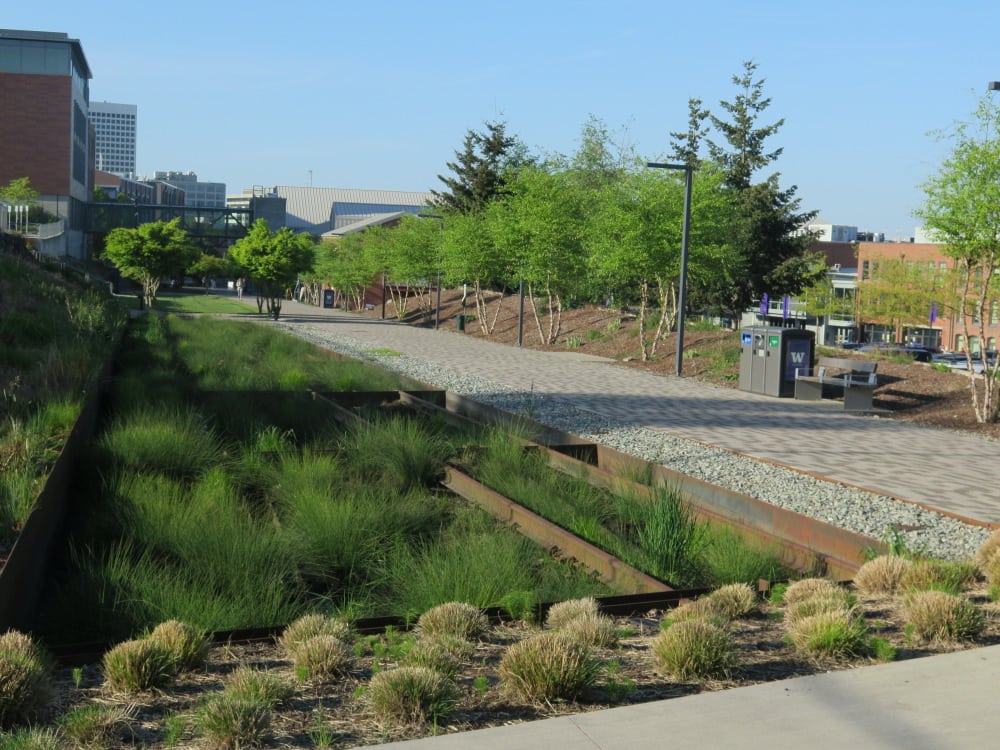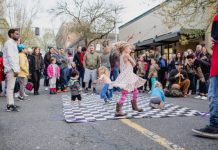Any stroll through the City of Destiny can unearth bits of history and short glimpses into the events and people who made Tacoma the city it is today. But one path covers it all. It is the Prairie Line Trail and more yet-untold stories will be added for years to come.
 The mile-long path along the former railroad tracks runs from the trailhead at South 25 and South Hood streets and runs through the University of Washington Tacoma, downtown past the Tacoma Art Museum and onto Dock Street, with views of the Foss Waterway and the working waterfront that made Tacoma a commercial and cultural hub of the world. The city’s history unfolds with every step thanks to a collection of art pieces and interpretive signs as well as historic and scenic viewpoints. A self-guided tour for mobile devices further adds to the depth of wonder the trail offers.
The mile-long path along the former railroad tracks runs from the trailhead at South 25 and South Hood streets and runs through the University of Washington Tacoma, downtown past the Tacoma Art Museum and onto Dock Street, with views of the Foss Waterway and the working waterfront that made Tacoma a commercial and cultural hub of the world. The city’s history unfolds with every step thanks to a collection of art pieces and interpretive signs as well as historic and scenic viewpoints. A self-guided tour for mobile devices further adds to the depth of wonder the trail offers.
“You can see what is there as well as go online,” said City Planner Elliott Barnett. “There is just so much there.”
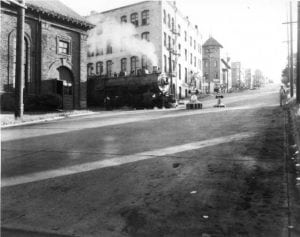
The Prairie Line Trail draws its name from the retired tracks that marked the end of the Northern Pacific’s transcontinental railroad that tied Tacoma to cities around the nation and fueled international trade as a “sails to rails” hub of imports and exports. The Prairie Line, to be fair, was a section of track that stretched south only to the Columbia River when it was completed on December 16, 1873. It didn’t truly tie into the Eastern United States with an all-rail route for another 15 years. It, however, proved to be a vital link for goods and passengers as work continued on the rest of the line and saw trains rattling its tracks for more than 130 years. The final train chugged through town on March 30, 2003. That final train allowed the retired tracks to serve another purpose – that of telling the story of Tacoma’s history through art, displays, viewpoints and urban greenbelts.
Today, walkers and cyclists see art, sights and buildings that celebrate the stories of everything from Native American life before white settlers arrived, to Tacoma’s bubbling Brewery District, and trade with China that was made easier with the rail links to Tacoma’s waterfront, to the city’s once bustling Japantown that all but disappeared with the start of World War II.
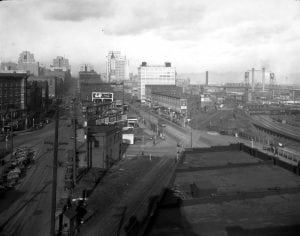
The city’s entire history passes by in just 5,280 feet.
A signature feature of the Prairie Line Trail include the Rails and Rain Garden, which mixes the history of the railroad tracks with public art designs to create a working exhibit of science that filters the stormwater before the water trickles to the bay.
Other selfie-worthy spots along the trail can be found throughout the UWT campus, which offers historical buildings, pocket parks and art installations. The best viewpoint comes at the end of the trail, as it connects to the Foss Waterway’s Esplanade and provides some of most picturesque views of the city.
The entire 20-foot-wide trail offers treats and cultural Easter eggs. More than 45,000 people have visited the trail’s website since it launched in 2017, most from mobile devices since the interactive map provides more information than any wayfinding scene could ever offer.
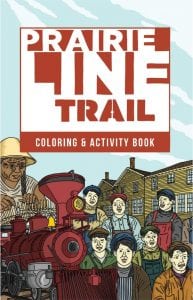
And more attractions are on the way.
Much of the Prairie Line Trail south of 21st Street, for example, still needs funding for the art and signs that have already been designed. Work on that end of the trail will center on ties to the Water Flume Line Trail, which once offered the “longest, highest and only exclusive bicycle bridge in the world.” Linking the Prairie Line and Water Flume trails will create a continuous path from South Tacoma to the waterfront. The grassy path in front of Tacoma Art Museum is also undergoing changes to serve as a child-friendly strip of art installations and activities.
“The path is very much still in development,” Barnett said.


































